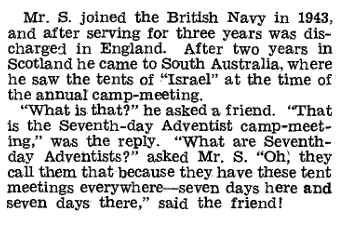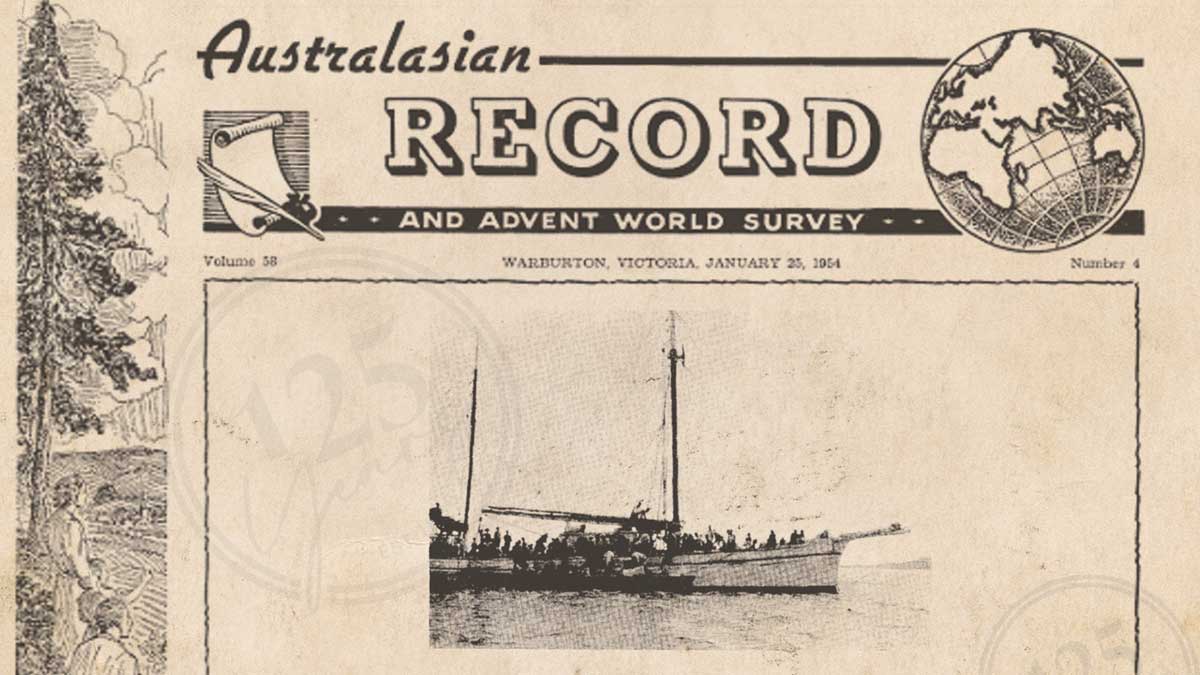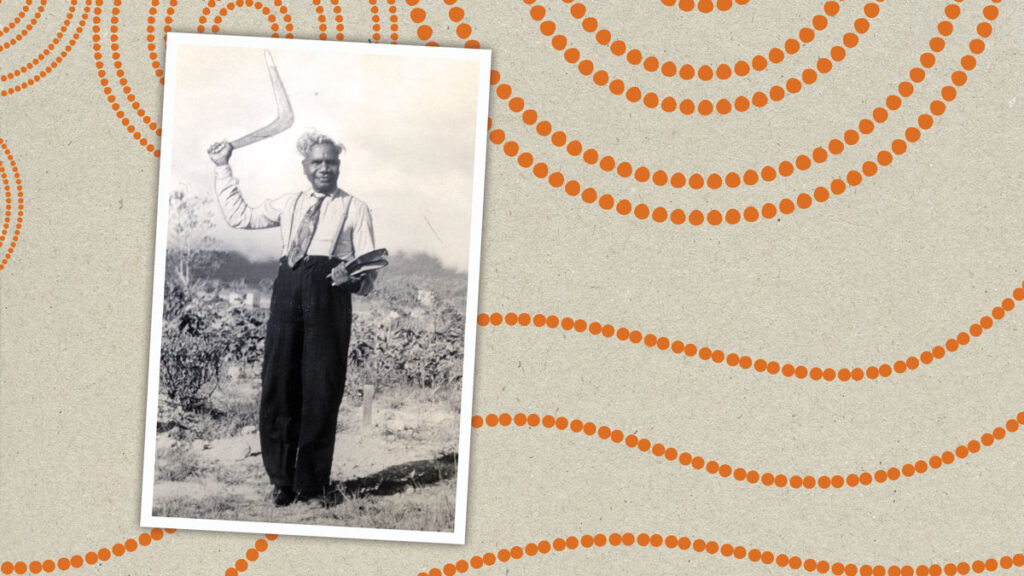With the post-war years in the past, mission in the Pacific islands was back in full swing. The weekly reporting of ministers and church personnel travelling around started back up again. Information was included in The Australasian Record in 1954, relaying reports from the various union missions at the Australasian Inter-Union Conference Annual Council. Gordon Branster, the first president of the newly formed Central Pacific Union Mission, reported on the Church’s work in the various countries under his delegation.
“Last year Suva had the worst hurricane in its history, and only a few weeks ago it experienced its only earthquake in living memory. But while the earth is being stirred and rocked to its foundations, a stirring is also taking place in the hearts of men and women. This is in evidence right through the territory of the Central Pacific Union Mission.
During the past few months five local mission sessions have convened with large numbers of our people in attendance. In every instance we believe they were the largest attendances at such gatherings since the reorganisation of the field. They came by sea and by land, many of them at great personal expense.”
The total member numbers were reported for some countries in this Union Mission; here is how they compare from 1954 to 2021 (unfortunately not all countries had statistics included in the Record report).
French Polynesia Mission:
“After over sixty years of labour the membership is only 262 [in 1955]. One of the main reasons for the slow increase is the fact that so many of our boys and girls and young people have drifted out of the church because we have no church schools for them to attend.” The total membership in 2021 was 5259 with an Adventist secondary school in Tahiti.
Cook Islands:
“This is our most widely scattered field, but the most productive to date, in proportion to population. In the group one out of every eighteen or nineteen inhabitants is a Seventh-day Adventist. And on the island of Aitutaki, the second largest in the group, one in every eight is a Seventh-day Adventist. The membership in the group at September was just a few short of 400.” In 2021 the membership was reported as 1030.
Vanuatu:
“Reports from this field reveal that on September 30 the membership stood at 711. But this year it is expected that the baptisms will reach 200, which is perhaps the largest number in any single year in the New Hebrides.” The total membership in 2021 was reported as 26,747.
Tonga:
“The brethren are extending their evangelical programme in this field, and could do much more if sufficient funds could be made available to operate their ship continuously. The only way to get from island to island is by ship, and when the ship needs to have extensive repairs effected, or its base operating budget has run out, there is only one thing to do and that is to tie up the ship until funds are available; and it is a well-known fact that ships depreciate more rapidly when lying idle than when in use. The membership in Tonga at September 30, was 349.” In 2021, it was 3918.
In 1955 Dr Gordon McDowell, the educational secretary for the Division, visited the Central Pacific Union Mission to inspect the Adventist schools. In the Cook group he and his companions had a horrifying sea trip, which immensely increased his admiration for the missionaries who constantly had to make such voyages in small ships. An account of this trip is taken from a letter the doctor wrote to friends; the remainder of the report was written for the Record:
“From Aitutaki we were supposed to fly to Rarotonga, 250km away, in a DC3 (a propeller-driven airliner). We discovered that this plane had returned to New Zealand the previous week and that the service was discontinued for three months. We were to make the voyage on the Inspire. Beware of the name! Of all traps for new chums to the South Seas this is it. No doubt you have heard of romantic cruises beneath tropic skies. Let me take you on one.
“The Inspire is a copra carrier eighty feet long and carries a large mainsail and a small jib. She has an auxiliary twin-screw petrol engine. Her speed is six to seven knots, provided the sea is smooth. I discovered such craft record minus figures in a rough sea.
“The hold was full of cargo, the deck was covered with heavy cases and such cargo as would not be damaged by water or easily washed overboard. There was little freeboard, and only a few inches of railing along the sides. We also carried a very large pig and some piglets. The pig was tied up just outside our cabin.
“With the cancellation of the aircraft, arrangements had been made with the captain for Pastors Branster, Aveling, and me to travel with him on this trip. There was really no cabin accommodation, but he kindly offered us his cabin, such as it was. It contained two bunks one above the other—just wooden platforms without mattresses. Pastor Branster fitted with difficulty into the top bunk and Pastor Aveling and I, with greater difficulty into the bottom one. The cabin was so tiny that only two people could stand up in it at one time. Thus we were already crowded. Imagine our amazement when we learned that another four Europeans and eighty-odd natives, including women and children, were to travel with us. They simply camped on top of the deck cargo. You could not walk along the deck without treading on people. In this condition we set out for the open sea straight into a howling gale. The normal run to Rarotonga takes seventeen to eighteen hours. We left at 2:30 on the Friday afternoon and staggered ashore forty-two hours later, on the Sunday morning. We had had no sleep for three nights and I had had nothing to eat for sixty hours.
“During the first night three natives, a man and two women, plus two children, invaded our cabin. We did not have the heart to drive them out. They could not lie down, but squatted on the floor, half on top of each other, and nursed the children. They were frightfully sick and never left the cabin once. You can imagine the condition of the cabin.
“To walk along the deck one had to clamber over bodies, try to counteract the terrific rolling of the ship, and endure waves crashing round one’s shoulders. It was extremely easy to slide over the low rail. As for the details of those forty-two hours—that is better left to your imagination. It was a nightmare experience. We just groaned the hours away.
“The captain said it was the roughest trip for years. If I had not been beyond caring about living, such seas in this small ship would have scared me rather badly. Frequently they crashed over the ship, keeping the deck continuously awash. How people were not swept overboard is still a mystery to me. Apparently we lost no-one. We rolled and pitched and pitched and rolled. It was impossible to sleep. It was even an effort to stay on the bunk.”

This snippet from a longer story about how “Mr S” came to be an Adventist gave us a laugh. We have included it for the humour it brought us in seeing an alternate idea on how the “Seventh-day Adventist” name came to be.






